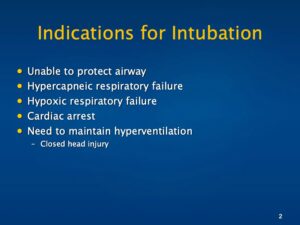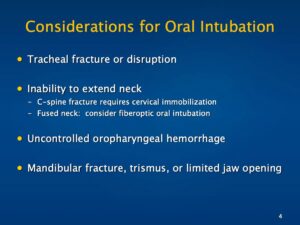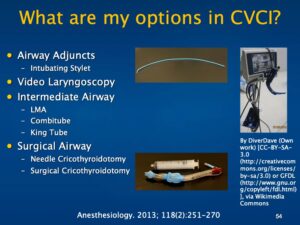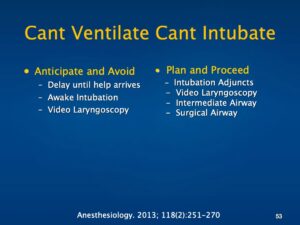Indications for a laryngeal mask airway placement

- GCS < 8 in the setting of trauma
- Persistent combativeness refractory to medications in the setting of trauma
- Major skin burns of 40% or more of body
- Severe smoke inhalation
- Moderate-severe facial or oropharyngeal burn
Considerations for laryngeal mask airway placement
- May not be able to ventilate patients with stiff lungs
– ARDS or pulmonary fibrosis
- Poor option for morbidly obese patients
- All of these conditions will make oral intubation difficult and increase the need for a surgical airway



